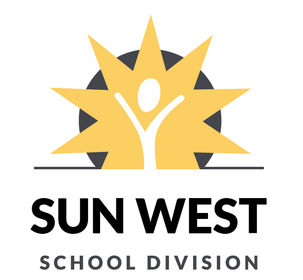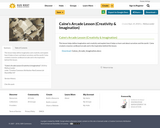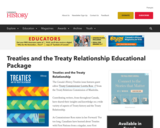
Coding without needing devices.
- Subject:
- Education
- Educational Technology
- Material Type:
- Activity/Lab
- GAP 4
- GAP 5
- GAP 6
- Author:
- Code.org
- Date Added:
- 10/09/2019

Sun West endorsed resources.
Sun West endorsed resources.

Coding without needing devices.

Website includes:
- Games on CSI
- Bloodstain Analysis
- Careers in Forensics
- Digital Forensics
- DNA
- Forensic Biology
- Drugs and Crime
- Fingerprints
- Fire Investigation
- Firearms and Tool Mark Examinations
- Forensic Anthropology
- Forensic Art
- Forensic Pathology
- General Forensics
- Prescription Drug Abuse
- Toxicology
-

There are basically two types of evidence: material and physical. Material evidence is generally considered anything that can be manufactured: paint, fibers, or glass, etc. These bits of evidence can be visible or invisible. In many cases, evidence must be examined with the use of microscopes or other scientific instruments to detect and collect valuable data or information. Material evidence is also commonly known as trace evidence.

This lesson helps define imagination and creativity and explain how it helps us learn and about ourselves and the world. Caine created a massive cardboard arcade and is the inspiration behind this lesson.

This fun twist on the popular game of Tic-Tac-Toe has students using their calculator skills. The game board could easily be adapted according to skill level and mathematical operation.

In 2008, a group called the Truth and Reconciliation Commission (TRC) was made. Their job was to listen
to stories about residential schools and then write the stories down so we can learn from our mistakes.
In 2015, the Truth and Reconciliation Commission announced their 94 Calls to Action. These are 94
activities all governments, courts, businesses, schools, and people living in Canada can do to help fix the
mistakes of the past and present so that all children – including First Nations, Métis, and Inuit children –
can grow up happy, healthy, safe, and proud of who they are.
This booklet is written by Spirit Bear as a youth-guide to the TRC’s 94 Calls to Action. Each of the calls is outlined in student-friendly language that will give them a deeper understanding of Truth and Reconciliation process.

Relaxing and serene app helps incorporate peace into daily life
Calm opens by instructing users to take a deep breath before landing on the home screen. This home screen can be customized, and users can choose from a range of more than 30 nature scenes and sounds to fit their preference. From this point, users can either complete a daily meditation that's provided, choose a sleep meditation, or practice deep breathing. If students choose to complete a meditation, they can choose from a list of more than 25 programs such as body scans, stories for kids, meditations for commuting, calming anxiety, demonstrating kindness, and more. Sleep Stories are fiction or nonfiction narrated stories that can be listened to before rest, which automatically shut off the app once the story finishes.
If students choose to practice deep breathing, they can follow a customizable animated bubble that expands and compresses to simulate inhaling and exhaling. Additionally, students can check their profile settings to set mindfulness reminders, link to Apple Health, analyze session history, invite friends, share statistics, or check their calendar to see how many consecutive days are included in their "streak."
This app is available from: (copy and paste URL into your browser)
Apple: https://apps.apple.com/us/app/id571800810?ign-mpt=uo%3D4
Google Play: https://play.google.com/store/apps/details?id=com.calm.android

The Can Do Kids website is full of ready-made resources to support teachers and learners in their study of orthography.
You have to sign up for an account, then can download free resources, including beautiful posters, that are connected to picture books supporting a variety of orthographic lessons. Please note, some items have a cost, but there are still many free resources on this site.

Explore the experience of how newcomers made Canada their home. Welcome to Immigration, Refugees and Citizenship Canada’s (IRCC) newest addition to its Teachers and Youth Web Corner. This exhibit explores the multifaceted experiences of newcomers from their first day of arrival in Canada to how Canada became their home, spanning from Confederation in 1867 to the present day.

The new Canadian landscapes are digital.
Canada Learning Code designs, delivers, and partners on technology education for Canadians.
Start here to: learn, teach or volunteer.

Welcome to a new way of learning. From workshops to local meetups, our learning experiences are designed to be a welcoming environment where you can learn in a social and collaborative way.
Make sure you have your parent's permission to attend any event!

Canada Learning Code believes all teachers can teach coding.
Teachers Learning Code is designed to help K-12 teachers with little-to-no coding experience teach coding fundamentals with confidence!
A quick start guide is available for download, as well as a variety of lesson plans!

Search for online and face to face learning experiences or workshops in your area!

A collection of coding lessons for all ages. Filter by coding concept, subject, grade or province!

The seminal Canada at War documentary film series was first broadcast on the CBC on April 3, 1962. Its 13 half-hour episodes were culled from more than 14,000,000 feet of film, mostly shot by Canadian Army cameramen during the Second World War but also including footage shot by German and British film crews. It took a team of editors three years to put the series together under the supervision of documentary filmmaker extraordinaire Donald Britain (who also wrote the commentary). It remains, to this day, one of the most important works on the Second World War.

This is the 2019 updated version of the Canada Food Guide.

This resource examines the biodiversity and the complexity of the various life forms that make up Canadian forests. The emphasis is on helping students appreciate the relationships and interdependence of all species in this ecosystem. Students learn how they can affect forests and understand ways to preserve and maintain their diversity. Themes include biotechnology, natural and introduced pests, species at risk, habitat loss and fragmentation, protected areas, climate change and traditional indigenous knowledge. Lessons can be summarized as follows:
Lesson One- It's What Inside That Counts ( 1x90min)
Students learn the basics of biodiversity by studying the arrangements of fauna and flora in a field investigation of the schoolyard. Teams will visit three assigned "habitat" sites and record living and non-living components. After discussing results, students are asked to create a poem or story about living in one of the habitat sites.
Lesson Two- Too Hot, Too Cold,...Just Right ( 2x45min)
This lesson focuses on how climate change impacts population numbers. After a discussion on how climate changes are driven by human activity, students are guided through a role play simulating the effects of rising temperatures on Arctic, Mid-latitude and Tropical biomes. After a wrap-up with discussion questions, students are asked to write a short story on an assigned topic.
Lesson Three- What Our Elders Say (1x60min, 1x90min)
After looking at how a Canadian Aboriginal legend relates to biodiversity, the students read and perform a play based on the "Legend of The Sky Sisters". Students then write their own legend incorporating an environmental message.
Lesson Four- Barrier To Biodiversity (2x60min)
After reviewing as a class how human activity can lead to habitat loss and fragmentation, students have to write and present stories in the form of a power point presentation, poster, public service announcement or skit describing how individual plants or animals are subject to, and respond to, stress in their habitat.
Lesson Five- Off Limits (4x45min)
Students investigate officially protected areas and create a class newspaper that contains articles which focus on the role of protected areas in helping maintain diversity. In this exercise they explore the social, economic, and environmental impacts of protected areas.
Lesson Six- To Be Or Not To Be (2x60min)
Students work in groups to produce a "species at risk" game board which focuses on the habitat impacts of: change/modification, over-exploitation of resources, poorly regulated commercial harvest, disruption of migration routes/breeding behaviors, contamination, and the introduction of exotic species.
Lesson Seven- Unwelcome Guests (2 x 60min)
Students develop a "Futures Wheel"(a graphic description of the inter-relationships and impacts of a single decision or event) focusing on exotic and invasive species in Canada.
Lesson Eight- Timberland ( 1x90min)
A role playing activity is used to show how biotechnology can be used as a tool to help maintain forest biodiversity. Using a timber-theft crime story students will complete a report (including a CSI sheet and victim profile) to assist them in understanding techniques used in biotechnology.
This resource can easily be adapted to include no technology.

Lesson plans to support learning about Canadian History.
Highlights:
- Treaties
- Treatment of minorities
- Expo '67
- World War I & II
- Gold Rush
- New France
- Historical Consequences
- Red River Settlement

Applicable for Grades 3–6 and Grades 7–12.
The lesson plans in Treaties and the Treaty Relationship: Educator’s Guide are framed on the Historical Thinking Concepts and offer teachers interactive instructional approaches that foster engaged student inquiry. They are fortified with maps, weblinks, and supporting Blackline Masters.
Lesson plan themes explore Treaties across Canada from time immemorial to the present, making a concerted link between the past and the future.
As well, each learning activity offers adaptions and/or activities based on the lesson theme for exploring Treaties in grades three to six.
It is with the greatest appreciation that we thank the many contributors and supporters of the Treaties and Treaty Relationship: Educator’s Guide.
Go to the website to download the pdf package.

Lessons are sequentially designed to build vocabulary, explain democracy, examine municipal, provincial/territorial and federal governments, and explore different levels of government in relation to health.
This unit plan overview provides links to all lessons along with links to accompanying teacher support materials that include: Student worksheets and answer guides for individual lessons and inquiry activities with support materials